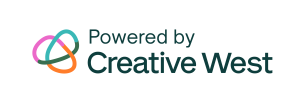Strategies to help your next grant proposal stand out
When creating a strong grant proposal, there are a few things to keep in mind. Putting together a grant proposal can be time-consuming and even frustrating if you do not have a strong concept around the key points you want to emphasize. With a solid game plan before beginning your proposal, you can save yourself time and create a grant proposal that will shine.
Step 1: Think about Your “Why” from a Funder’s Perspective
Put yourself in the funder’s position while creating your proposal. How closely does your project align with the funding program’s goals? Think carefully about what would make you want to take a deeper look at a proposition and incorporate that into your proposal to compel them to believe in your message as much as you do. Putting yourself in their shoes will give you a different perspective and could also make certain talking points stand out as something to highlight and prioritize in your grant proposal.
The “why” is the perfect place to explain your motivation for getting involved in your project, and one of the main key points to creating a strong grant proposal. If you have a particular connection to a cause or an organization that your grant will help, be sure to set it out, briefly, in your why statement. Grantmakers may fall in love with ideas, but they also fall in love with people. This is your opportunity to demonstrate not only why your proposal should be accepted but also why you are the person or team to deliver the stated aims of the grant.
Are you a funder looking to utilize GO Smart for your organization’s grant management? Click here to schedule a demo today.
Step 2: Craft the Perfect Needs Statement
While a good cover letter and summary are vital to a strong grant proposal, it is also important to be able to define your statement of need clearly and concisely. This is essentially two things: your “elevator pitch,” and your opportunity to convey in what ways you will provide a solution to the presented problem.
The very nature of grantmaking is that you will be competing against many other causes, all equally as worthy as your own. Be sure to explain exactly who will benefit from the grant and why it is necessary. Does it serve an under-represented community or population? Will it provide specific opportunities to people who would otherwise be denied them? Once you have highlighted your core beneficiaries, don’t be afraid to expand the circle of benefit to a broader group. Most benefits to a particular marginalized group will spread in a ripple effect into ever-larger groups and eventually into society itself.
You can then succinctly show how your proposal would influence the bigger picture. That said, keep things realistic. Try to keep your claims factual and avoid grandiose claims that would not be deliverable if you were to obtain funding.
Begin writing your proposal by focusing on what the grant funds will be used for. This introduces you as someone who is confident and knowledgeable right away, piquing funders’ interest and enticing them to delve further into your proposal. Again, clarity and specificity are key. If there are other organizations already doing similar work in that area, be sure to explain what you would do differently and why.
Step 3: Organize Your Goals
Once your grant is approved, you will likely have to check in with the grantors to give progress reports throughout the project. It is therefore vital that your proposal contains costs and timelines that are realistic and accurate; that is, that you can support and explain when challenged on them. A big mistake made in some proposals is thinking that promising a lot in a short period will make funding more likely to be granted. This is not the case. Much more important is a clear roadmap with realistic, achievable, measurable goals which can be used as benchmarks during your check-ins.
Step 4: Know Your Grantors
Grant proposals should not be a one-size-fits-all model. Each foundation will have its unique history that led them into this space and specific submission guidelines. At minimum, be sure to check websites, social media, and previous grants awarded to help you formulate your answer to the question, “Why them?”
Ensure you have completed basics like answering the specific questions asked, staying within given word limits or deadlines, proofreading for typos, and getting the name of the recipient right. Although a grant proposal can be heavily structured, there is an element of creative writing within it. Good spelling and grammar, for example, may just make your pitch stand out.
Step 5: Finally…Be Nice!
The grant foundations are run by people who respond to relationships like anyone else. Part of creating a strong grant proposal starts at the first communication. Be sure to remain polite and professional, whether the grant is awarded or not, as you never know the impact that building a positive relationship could have down the road.
Thank you can be one of the most powerful things you can say throughout the process.
Good luck!


